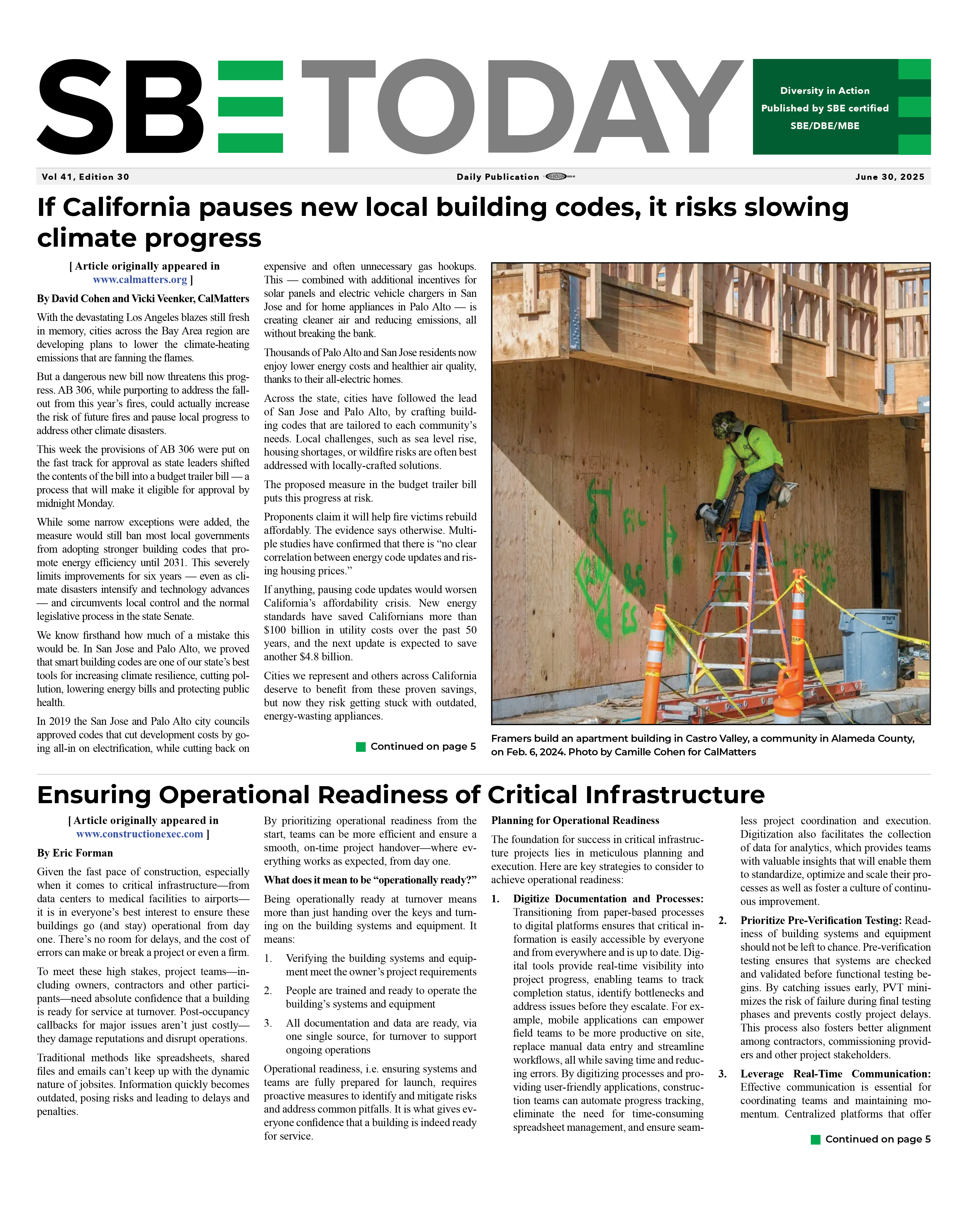|
|
New Report: Labor Shortage Weakens Housing Supply and Affordability Home Building Industry Needs Thousands More Skilled Workers to Meet Demand
11/04/2021
A lack of skilled construction labor is a key limiting factor for improving housing inventory and affordability, according to a new report by the Home Builders Institute (HBI). Additionally, the report cautions that the required number of construction workers to keep up with demand is approximately 740,000 new workers per year for the next three years.
HBI’s Fall 2021 Construction Labor Market Report’s estimation of the current need for additional workers is based on a new analysis of Bureau of Labor Statistics data by the National Association of Home Builders (NAHB). The estimate is determined by approximating the required net growth in employment due to construction expansion plus the workers required to replace individuals who leave the sector permanently.
“The construction industry needs more than 61,000 new hires every month if we are to keep up with both industry growth and the loss of workers either through retirement or simply leaving the sector for good,” said HBI president and CEO Ed Brady. “From 2022 through 2024, this total represents a need for an additional 2.2 million new hires for construction. That’s a staggering number.”
Meanwhile, the report shows home sales outpacing home construction, resulting in growing backlog and supply-chain bottlenecks. More than 12 million new households have been formed since the beginning of 2012, while approximately only 10 million new homes for ownership and rent were built during the same time.
“The U.S. is experiencing a historically low supply of homes for sale, especially at the lower price points that newly formed households tend to need,” Brady said. "For residential construction to expand and housing affordability to increase, more skilled building trade workers must be recruited and trained for the home building sector.”
The report, based on research of NAHB’s Economics Group, provides an overview of the state of the nation’s construction labor market. Other key findings include:
“The construction worker shortage has reached crisis level,” said Brady. “The situation will become more challenging in the coming year when other industries rebound and offer competitive wages and benefits to prospective employees.” "We need to build the next generation of skilled tradespeople in construction," he added. “One of our most important tasks as an industry is to work with parents, educators and students, as early as the middle school years, to demonstrate that young people can have the promise of great jobs and careers in the trades.” The chief executive outlined six fundamental steps that home builders can take to increase the number of skilled construction trade workers in the U.S.:
HBI trains skilled workers for the building industry. It is the nation’s leading nonprofit provider of skilled trades training in residential construction. Through the organization’s industry-recognized curriculum, HBI provides pre-apprenticeship and advanced training, certification programs, assistance in obtaining apprenticeships, and job placement services that enable students to build careers and change their lives. For a copy of the Fall 2021 HBI Construction Labor Market Report, and for more information, visit: www.hbi.org. SOURCE: https://www.prnewswire.com/news-releases/new-report-construction-industrys-worker-shortage-hurts-housing-affordability-and-supply-301272714.html Back To News |
|





